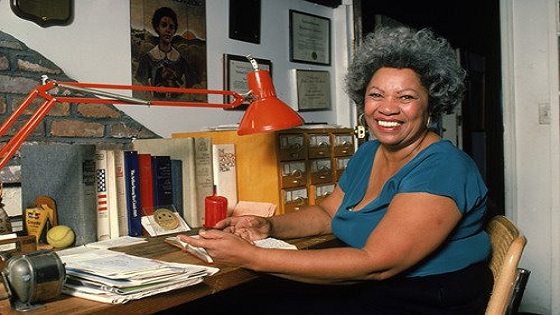“Recitatif,” a rare Toni Morrison short story, arrives in book form today with a rigorous, close reading from London critic and novelist Zadie Smith.
The title is a French word for a music that hovers between song and ordinary speech.
In the story, Roberta and Twyla are roommates at a shelter for orphaned or otherwise homeless youth. Their lives unfold over the next 40 pages. Morrison is opaque about which girl is Black and which is white, but sprinkles details: they’re both poor, one has a sick mother, the other’s mother is a woman who “dances all night.”
The girls meet again and again as they grow up, begin families and continue to hold on to memories of their four months together at the shelter.
The short story published in a 1983 collection called “Confirmation: An Anthology of African American Women.” Morrison wrote in 1992 that her goal was to craft “an experiment in the removal of all racial codes from a narrative about two characters of different races for whom racial identity is crucial.”
The result is uncomfortable, as Morrison surfaces her readers’ impulse to scan each page, each bit of dialogue, for a racial clue. Just when you think you’ve settled on an answer (Twyla’s white, you assert confidently), another paragraph makes you double back.
Even knowing Morrison’s aim, it’s difficult to detach from our deep socialization. Race matters, we know it matters, and to remove it feels like our roadmap has been snatched. We’re driving blind.
Smith notes this conundrum in the introduction: “If race is a construct, whither blackness? If whiteness is an illusion, on what else can a poor man without prospects pride himself? I think a lot of people’s brains actually break at this point. But Morrison had a bigger brain.”
The women collide into each other on scenarios that give readers space to examine their own biases. Is the waitress more likely to be black? What about the mother protesting school integration? Who would be more likely to be on their way to see Jimi Hendrix? Part of the fun is recognizing where bias falls short and commonality emerges.
“Morrison constructs the story in such a way that we are forced to admit the fact that other categories, aside from the racial, also produce shared experiences,” Smith concludes. “Categories like being poor, being female, like being at the mercy of the state or the police, like living in a certain zip code, having children, hating your mother, wanting the best for your family. We are like and not like a lot of people a lot of the time.”
Startling that what was true in 1983 feels fresh almost 40 years later.


